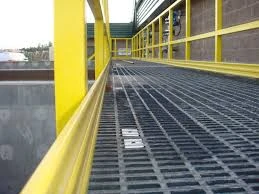
-
 Afrikaans
Afrikaans -
 Albanian
Albanian -
 Amharic
Amharic -
 Arabic
Arabic -
 Armenian
Armenian -
 Azerbaijani
Azerbaijani -
 Basque
Basque -
 Belarusian
Belarusian -
 Bengali
Bengali -
 Bosnian
Bosnian -
 Bulgarian
Bulgarian -
 Catalan
Catalan -
 Cebuano
Cebuano -
 China
China -
 China (Taiwan)
China (Taiwan) -
 Corsican
Corsican -
 Croatian
Croatian -
 Czech
Czech -
 Danish
Danish -
 Dutch
Dutch -
 English
English -
 Esperanto
Esperanto -
 Estonian
Estonian -
 Finnish
Finnish -
 French
French -
 Frisian
Frisian -
 Galician
Galician -
 Georgian
Georgian -
 German
German -
 Greek
Greek -
 Gujarati
Gujarati -
 Haitian Creole
Haitian Creole -
 hausa
hausa -
 hawaiian
hawaiian -
 Hebrew
Hebrew -
 Hindi
Hindi -
 Miao
Miao -
 Hungarian
Hungarian -
 Icelandic
Icelandic -
 igbo
igbo -
 Indonesian
Indonesian -
 irish
irish -
 Italian
Italian -
 Japanese
Japanese -
 Javanese
Javanese -
 Kannada
Kannada -
 kazakh
kazakh -
 Khmer
Khmer -
 Rwandese
Rwandese -
 Korean
Korean -
 Kurdish
Kurdish -
 Kyrgyz
Kyrgyz -
 Lao
Lao -
 Latin
Latin -
 Latvian
Latvian -
 Lithuanian
Lithuanian -
 Luxembourgish
Luxembourgish -
 Macedonian
Macedonian -
 Malgashi
Malgashi -
 Malay
Malay -
 Malayalam
Malayalam -
 Maltese
Maltese -
 Maori
Maori -
 Marathi
Marathi -
 Mongolian
Mongolian -
 Myanmar
Myanmar -
 Nepali
Nepali -
 Norwegian
Norwegian -
 Norwegian
Norwegian -
 Occitan
Occitan -
 Pashto
Pashto -
 Persian
Persian -
 Polish
Polish -
 Portuguese
Portuguese -
 Punjabi
Punjabi -
 Romanian
Romanian -
 Russian
Russian -
 Samoan
Samoan -
 Scottish Gaelic
Scottish Gaelic -
 Serbian
Serbian -
 Sesotho
Sesotho -
 Shona
Shona -
 Sindhi
Sindhi -
 Sinhala
Sinhala -
 Slovak
Slovak -
 Slovenian
Slovenian -
 Somali
Somali -
 Spanish
Spanish -
 Sundanese
Sundanese -
 Swahili
Swahili -
 Swedish
Swedish -
 Tagalog
Tagalog -
 Tajik
Tajik -
 Tamil
Tamil -
 Tatar
Tatar -
 Telugu
Telugu -
 Thai
Thai -
 Turkish
Turkish -
 Turkmen
Turkmen -
 Ukrainian
Ukrainian -
 Urdu
Urdu -
 Uighur
Uighur -
 Uzbek
Uzbek -
 Vietnamese
Vietnamese -
 Welsh
Welsh -
 Bantu
Bantu -
 Yiddish
Yiddish -
 Yoruba
Yoruba -
 Zulu
Zulu
Innovative Designs for Eco-Friendly Watercraft in Modern Boating Adventures
Exploring the Beauty of GRP Boats A Modern Marvel of Marine Engineering
In the world of boating, the materials used in construction play a significant role in determining performance, durability, and overall user experience. Among the notable materials that have revolutionized yacht and boat building is Glass Reinforced Plastic (GRP). This composite material has become a popular choice for boat builders and enthusiasts alike, owing to its unique characteristics and advantages.
GRP, commonly known as fiberglass, consists of a plastic matrix reinforced with glass fibers. This combination results in a lightweight yet incredibly strong material, making it ideal for watercraft. One of the primary benefits of GRP boats is their exceptional strength-to-weight ratio. Unlike traditional materials like wood or metal, GRP is much lighter, which translates to improved speed and fuel efficiency. Boaters can enjoy the thrill of sailing or motoring with less drag, allowing them to reach their destinations faster and with lower energy consumption.
.
Aesthetics also play a crucial role in the appeal of GRP boats. The material can be molded into various shapes and sizes, allowing for sleek and modern designs that cater to a wide range of tastes. Many boat manufacturers utilize GRP because it allows for creative freedom in design without compromising structural integrity. The result is a visually striking vessel that stands out on the water, whether it’s a luxurious yacht or a rugged fishing boat.
grp boat

Furthermore, GRP boats are generally easier to repair compared to their traditional counterparts. In case of damage, fiberglass can often be patched up with relative ease, restoring the boat’s functionality without necessitating significant downtime. This attribute is particularly advantageous for professional operators who rely on their vessels for income, as it ensures that they can continue their operations with minimal disruption.
While the advantages of GRP boats are substantial, it’s also essential to consider the environmental aspects of boat construction. Traditional materials like wood are often harvested unsustainably, leading to deforestation and ecological consequences. Alternatively, many GRP manufacturers are increasingly adopting eco-friendly practices, utilizing recycled materials and implementing sustainable production processes. As eco-consciousness rises within the community, the boat-building industry is making strides to reduce its carbon footprint and enhance sustainability.
However, it’s crucial to acknowledge that GRP boats do have their downsides. For instance, some enthusiasts argue that fiberglass lacks the charm and character often associated with wooden boats. Additionally, improper disposal of GRP products can lead to environmental concerns, as the material can take a considerable time to break down. Thus, responsible stewardship and effective recycling initiatives are essential in mitigating potential negative impacts.
In conclusion, GRP boats represent a significant advancement in marine technology, combining durability, aesthetic appeal, and low maintenance. They have transformed the boating experience for many, allowing for faster, more efficient travel on water. As the industry continues to evolve, it’s vital for both manufacturers and consumers to prioritize sustainability, ensuring that the joys of boating can be appreciated for generations to come. With ongoing innovations and a commitment to responsible practices, GRP boats are set to remain a cornerstone of marine adventures, ushering in a new era of exploration on the water.
Latest news
-
Exploring the Benefits of Top Hammer Drifter Rods for Enhanced Drilling PerformanceNewsJun.10,2025
-
High-Precision Fiberglass Winding Machine for GRP/FRP Pipe Production – Reliable & Efficient SolutionsNewsJun.10,2025
-
FRP Pipes & Fittings for Shipbuilding - Corrosion-Resistant & LightweightNewsJun.09,2025
-
Premium FRP Flooring Solutions Durable & Slip-ResistantNewsJun.09,2025
-
Premium Fiberglass Rectangular Tanks Durable & Lightweight SolutionNewsJun.09,2025
-
Tapered Drill String Design Guide Durable Performance & UsesNewsJun.09,2025









